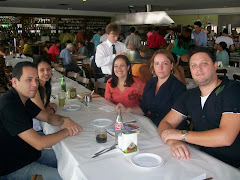
Inventor Michelson offers $75M for a way to sterilize pets
By Sharon L. Peters, Special for USA TODAY
A very rich, very impatient retired surgeon wants the pet overpopulation solved.
So Gary Michelson has put a hard-to-ignore enticement on the table: $75 million.
The person or group that comes up first with a safe, one-time non-surgical means to sterilize male and female cats and dogs gets $25 million, Michelson's non-profit Found Animals Foundation will announce today at the National Spay/Neuter Conference in Chicago. And up to $50 million more will be available to support the research of one or several individuals who come forward with plausible approaches.
"No one will stop what they're doing and turn their attention to this problem for $10 million. That's not enough," says Michelson, 59, a retired Los Angeles orthopedic surgeon who invented and patented hundreds of surgical instruments, won an infringement case in 2005 and landed at No. 317 on Forbes' 400 Richest Americans list last month.
Animal lover Michelson is convinced, like most animal-welfare experts, that if unwanted litters never materialized, U.S. shelters wouldn't be euthanizing 4 million to 6 million animals a year.
FIND MORE STORIES IN: Chicago | Los Angeles | Forbes | Veterinary Medical Association | Richest | Michelson | Gail Golab
He "absolutely" believes that the $25 million carrot, coupled with the cash grants to spur research, will prompt sufficient activity that an affordable non-surgical sterilant will be on the market within 10 years.
The solution may originate from any of several arenas — from human or animal researchers who are endocrinologists, neuroscientists, reproductive biologists, molecular technology experts, or even pharmacology specialists.
"We're completely agnostic regarding the approach," says foundation executive director Aimee Gilbreath. "We'll consider anything. We really believe if cutting-edge technologies are applied we can solve this."
The foundation is partnering with the Alliance for Contraception in Cats and Dogs, a non-profit that for eight years has pressed for non-surgical approaches to pet sterilization, believing that millions more pets would be sterilized if there were a non-surgical alternative. "This is huge for our cause," says alliance president Joyce Briggs.
Removing barriers to sterilization
It is estimated that nearly 73% of dog owners and 86% of cat owners now spay or neuter their pets. But the rest mostly seem inclined to keep things as they are. The very notion of surgery is off-putting or scary to some of them, many of whom worry about anesthesia, experts say. Sterilization can cost $150 or more per animal and requires a substantial time commitment as the owner must transport the animal to a vet and return hours later, a journey of many miles in rural areas.
Also, surgery is cumbersome "in the field," where groups attempt to conduct on-site mobile sterilizations in neighborhoods or communities where a high percentage of pets are known to be producing litters year after year.
A quick, reliable, life-of-the-pet sterilant "would completely change" the way sterilization-focused non-profit groups spend their time and resources, says Tonja Robertson, founder of Spay/Neuter Indiana Pets. She and three other volunteers devoted nearly 600 hours from April 1 to Sept. 30.
They spread the spay/neuter word in grocery-store parking lots in rural, low-income southern Indiana. They distributed discount sterilization vouchers and, three times a month, transported a dozen or more pets to a veterinarian, then picked them up after the surgery (200 miles in all).
That resulted in 205 cats and 38 dogs being fixed. "If we could have a quick, non-surgical method," Robertson says, "we'd set up once a week in areas of need, get the job done, and we could redirect our efforts to adoption or cruelty."
Dependent on humans 'for a good life'
Michelson's foundation has put together a review board of experts from several disciplines and will add more if proposals from unexpected arenas arrive. The board will meet in January to consider which proposals will receive a first-stage grant.
To those who object to his channeling so much money to help animals when there are so many human problems to be solved, Michelson has a simple answer: his medical research foundation, which has funded more than $110 million in research and discovery, most of it related to hereditary diseases.
He offers no apologies for his pet program.
Animals are "helpless. They depend on humans for a good life," says Michelson, who shares his home with two rescued pit bulls and a runt-of-the-litter whippet.
It's unclear how veterinarians will react to whatever alternative sterilization method might emerge from the contest as they will want to assess its safety and effectiveness, says Gail Golab of the American Veterinary Medical Association. But, she says, her group is on record as supporting efforts to non-surgically sterilize dogs and cats.
Share this story:





























































